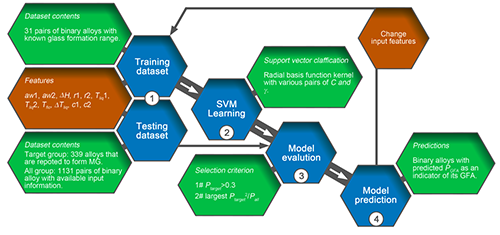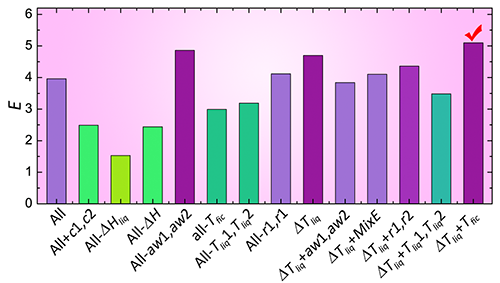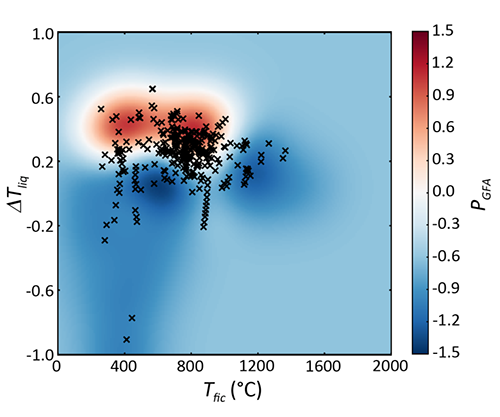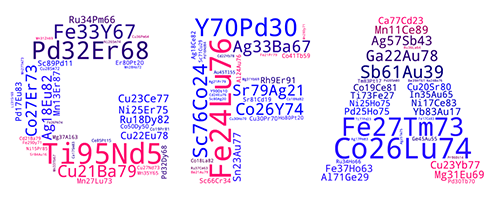
For the last decade, machine learning has provided us with numerous conveniences for our everyday lives. New things like intelligent web search, speech recognition, autopilot automobile are becoming more and more common. In China, the project "MGI (Materials Genome Initiative) research platform" is now under construction in Huairou science city. Nowadays, the method that combines high-throughput experiment, high-performance computing and deep data analysis is becoming more and more popular.
In the research field of amorphous alloys, the prediction of the glass-forming ability (GFA) by varying the composition of alloys remains a challenging problem for glass physics, as well as a problem for industry, with enormous financial ramifications. In the past, the discoveries of new alloy systems are mainly based on the empirical principles. Because these principles lack accuracy and universality, the development of new amorphous alloys has not been satisfying. It has been a challenging problem how to accelerate the development of new materials.
Recently, SUN Yitao in Prof. WANG Weihua's group from the Institute of Physics of the Chinese Academy of Sciences, collaborated with Prof. LI Maozhi from Renmin University of China, analyzed the GFA of binary alloys via machine learning.
A link between alloy composition and property is established and prediction can be made accordingly. Support Vector Machine (SVM) is used to construct a multi-dimensional space and data are categorized by dividing the space into different sub-spaces. This way the correlation between input parameters and material properties is established (Fig.1).

Fig.1. Overall setup for SVM modeling, including four major processes: building of the dataset, the learning process, model evaluation, and model prediction. (Image by Institute of Physics)
By changing input parameters, the effect of different material properties on the GFA can be assessed (Fig.2). It was found that parameter ΔTliq is most relevant to the GFA of an alloy, and the best model is developed using two parameters: ΔTliq and ΔTfic.

Fig.2. Input parameters’ assessment. (Image by Institute of Physics)
Test on the best model showed that there is a strong correlation between model prediction and the known good glass formers (Fig.3). Such model predictions has the potential to largely accelerate the discovery of new alloys with good GFA (Fig.4).

Fig.3. Predictions from the best SVM model. (Image by Institute of Physics)

Fig.4. Word cloud depiction of the best glass formers from SVM model prediction. (Image by Institute of Physics)
This work is a typical attempt of using new methods to solve classic problems. A more abundant database should significantly improve the performance of machine learning for much better prediction of GFA of alloys. The improvement in our ways of dealing with data has the potential to boost material research speed fundamentally.
This study entitled "Machine Learning Approach for Prediction and Understanding of Glass-Forming Ability" was published in the Journal of Physical Chemistry Letters.
The study was supported by the National Science Foundation, the Ministry of Science and Technology of China, the Chinese Academy of Sciences.

86-10-68597521 (day)
86-10-68597289 (night)

52 Sanlihe Rd., Xicheng District,
Beijing, China (100864)

